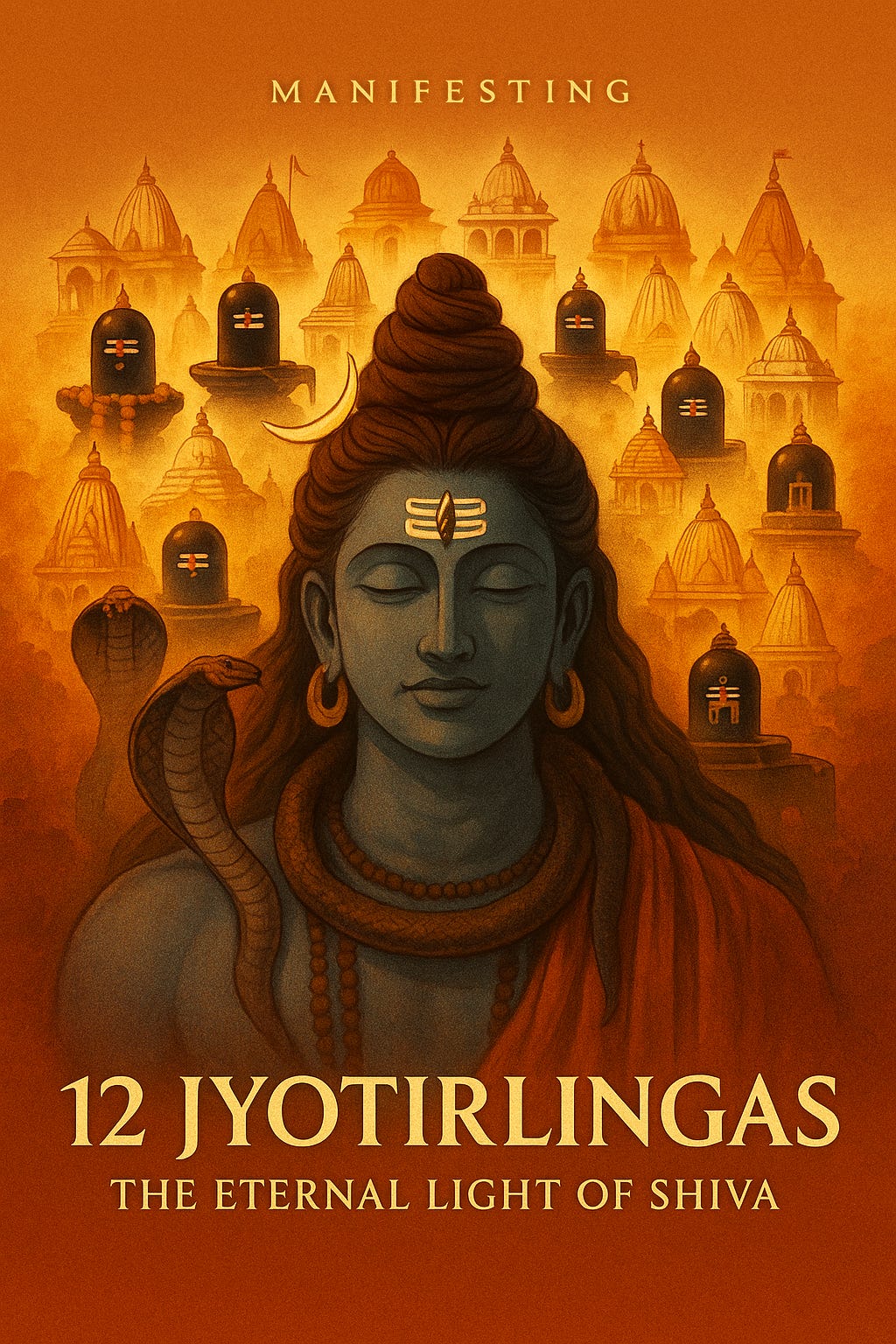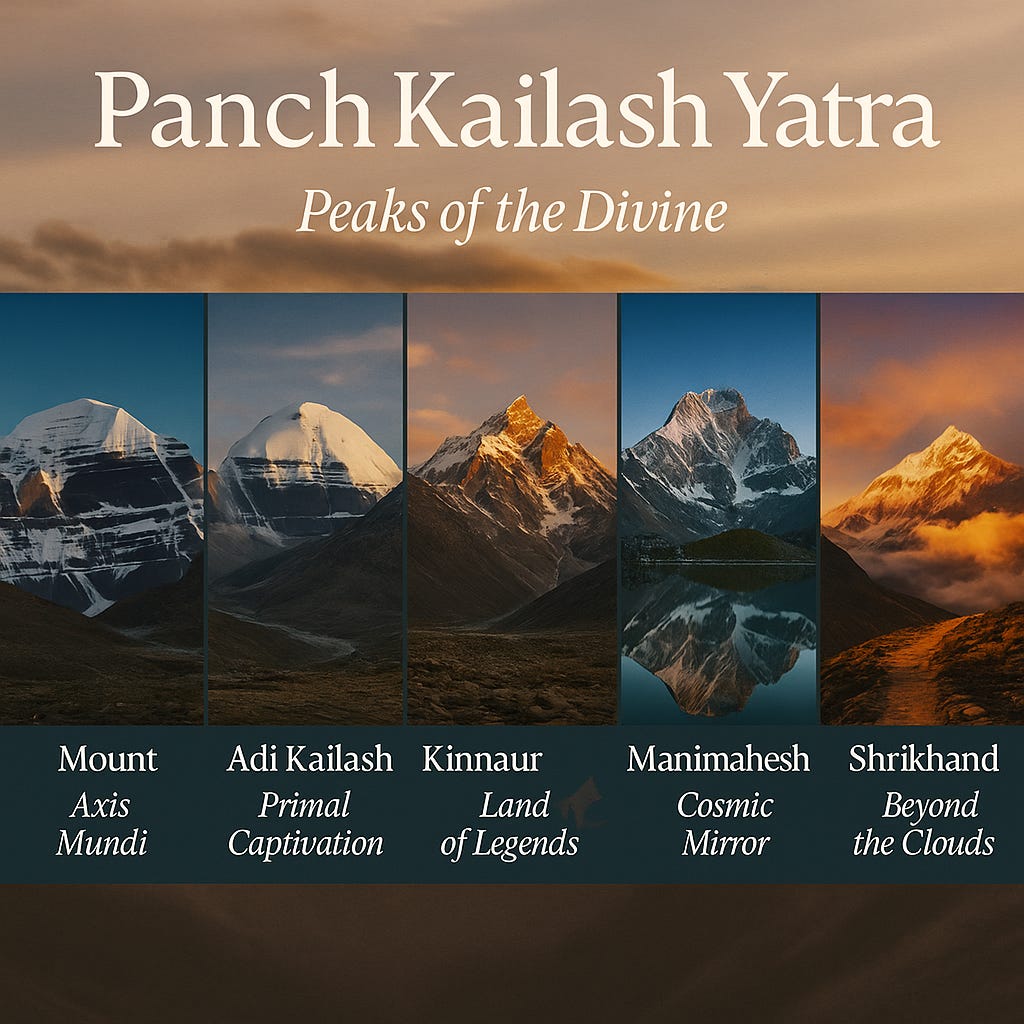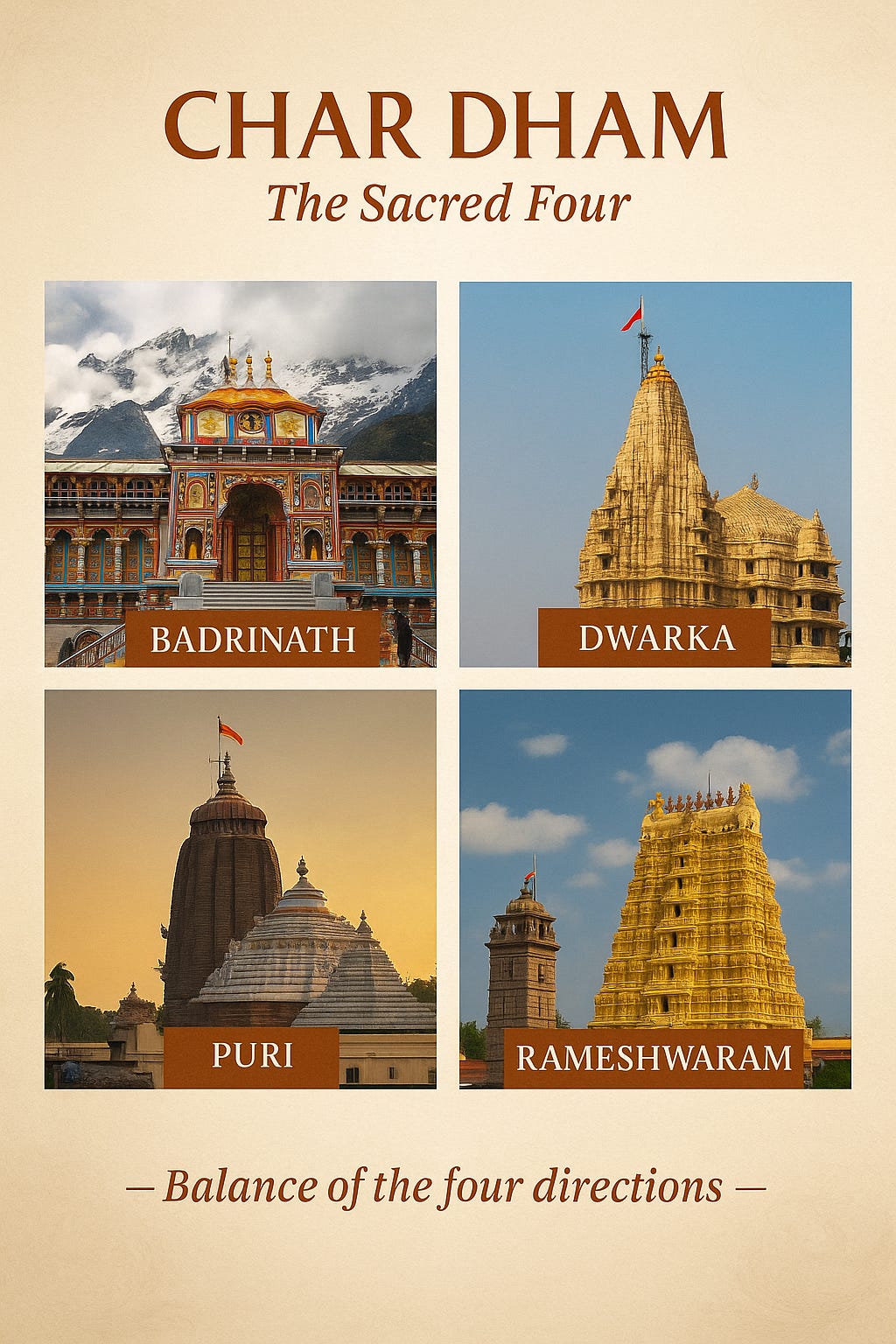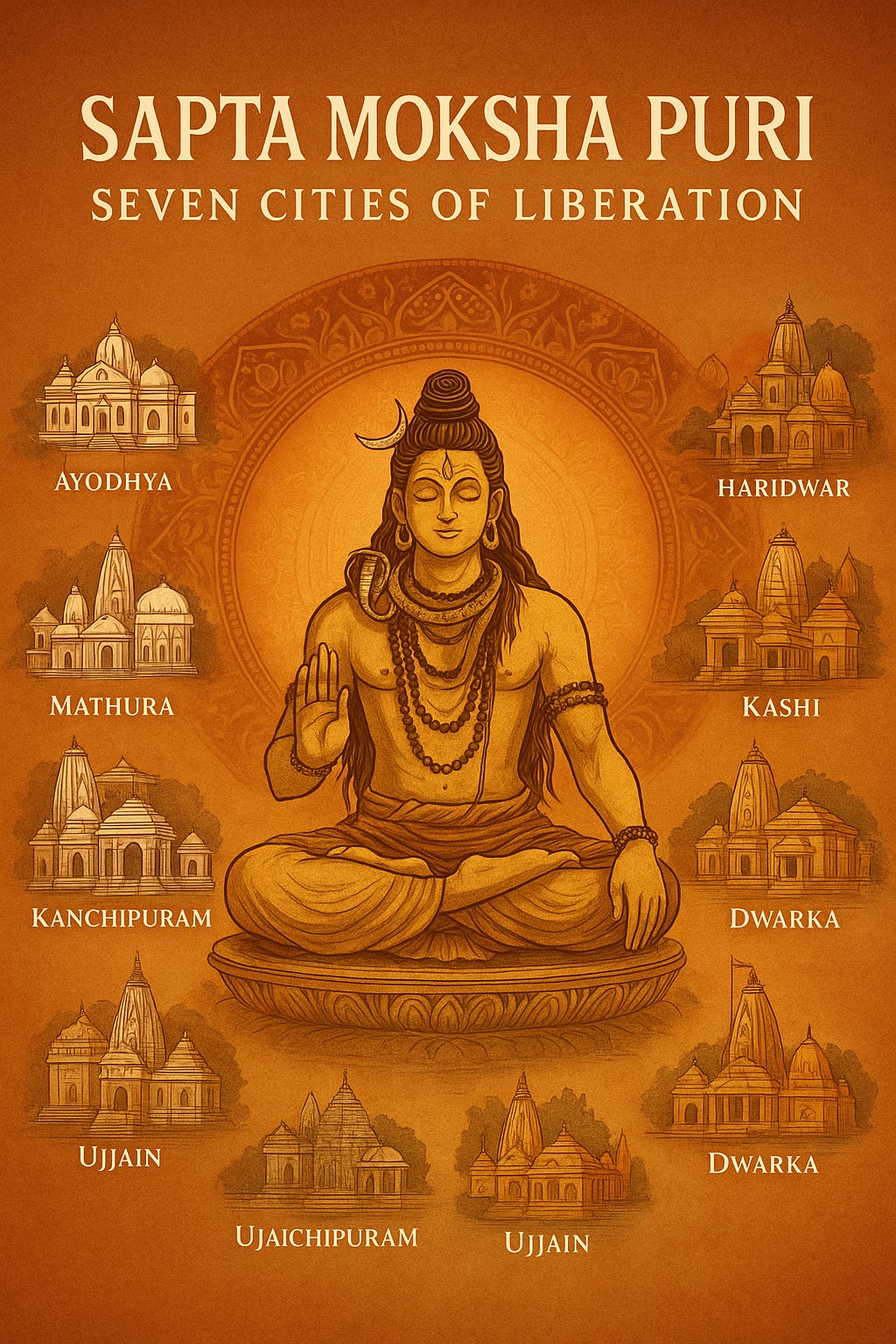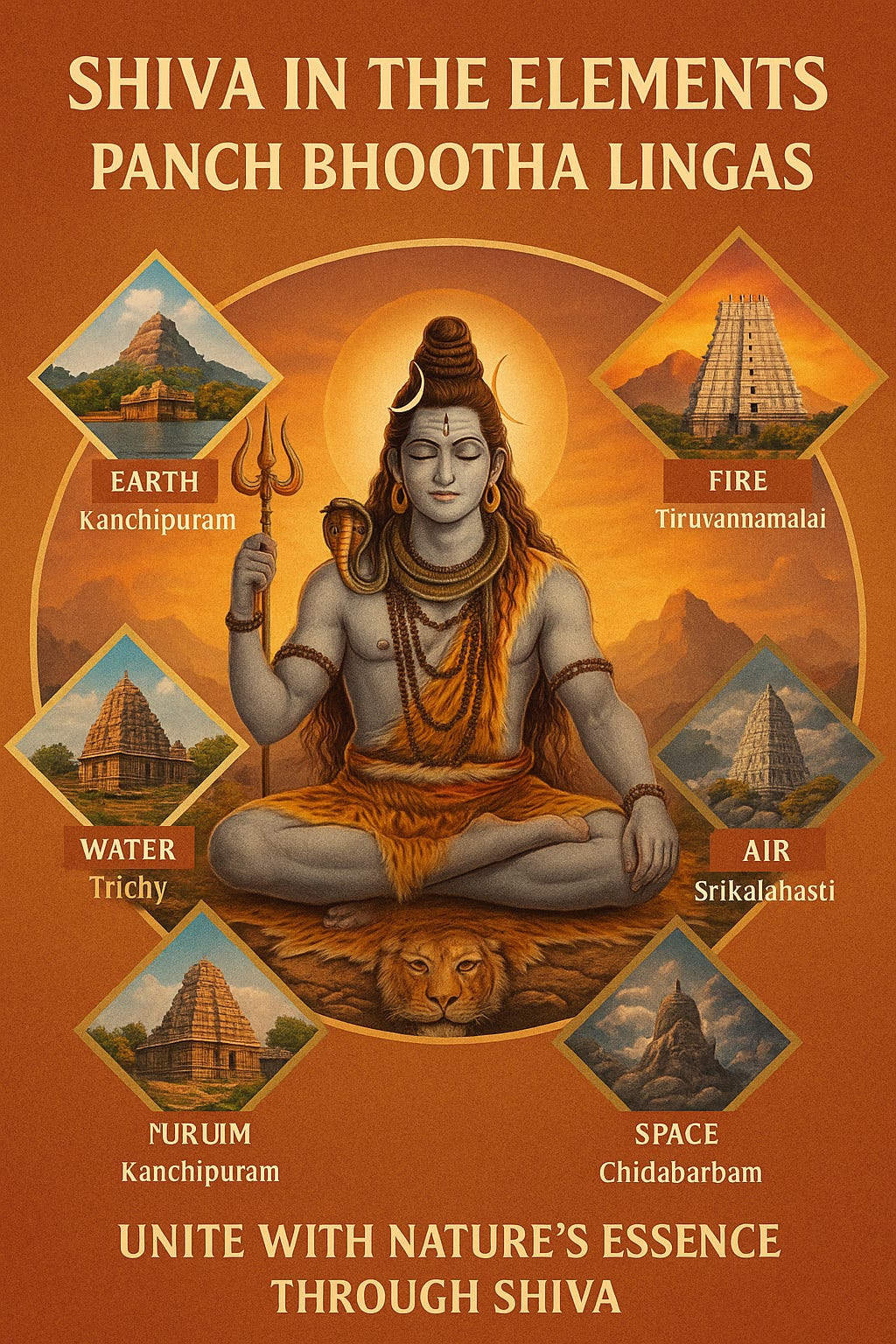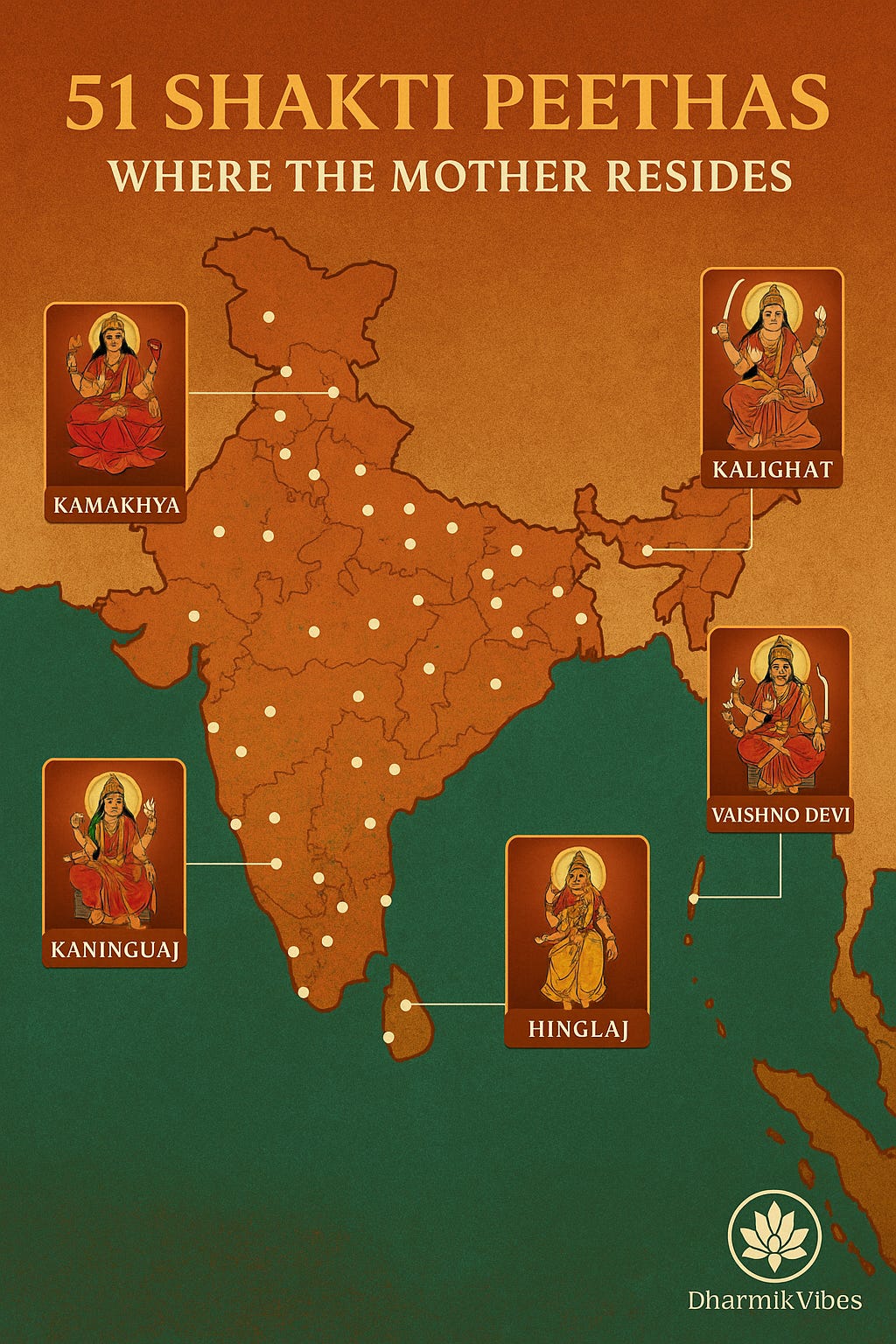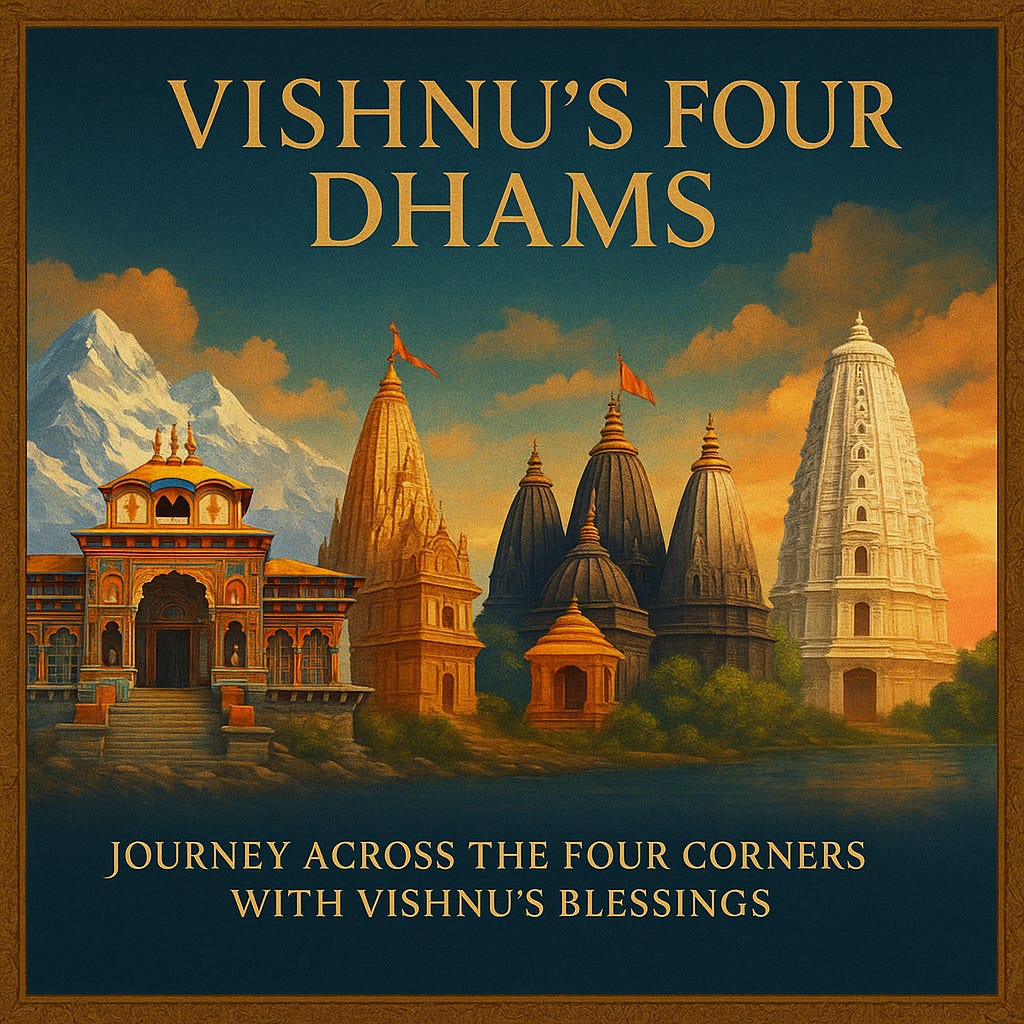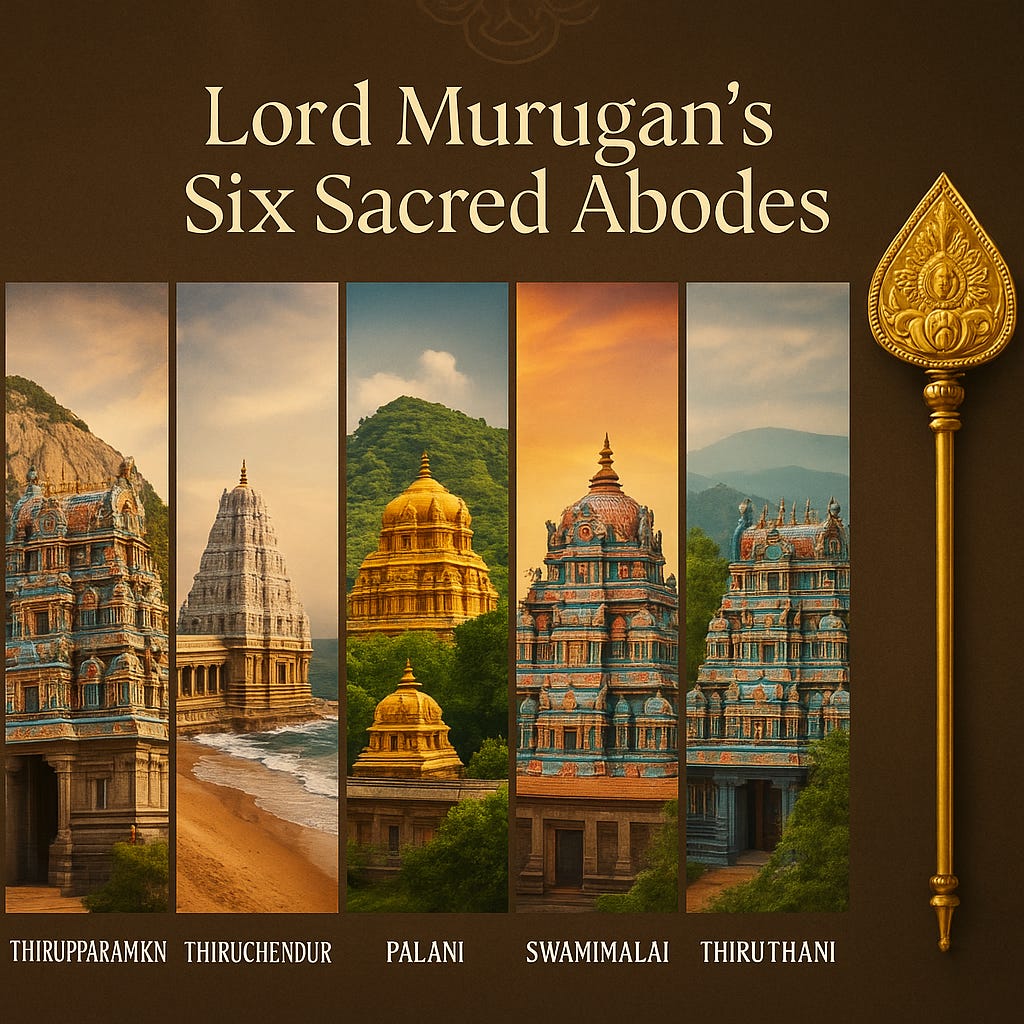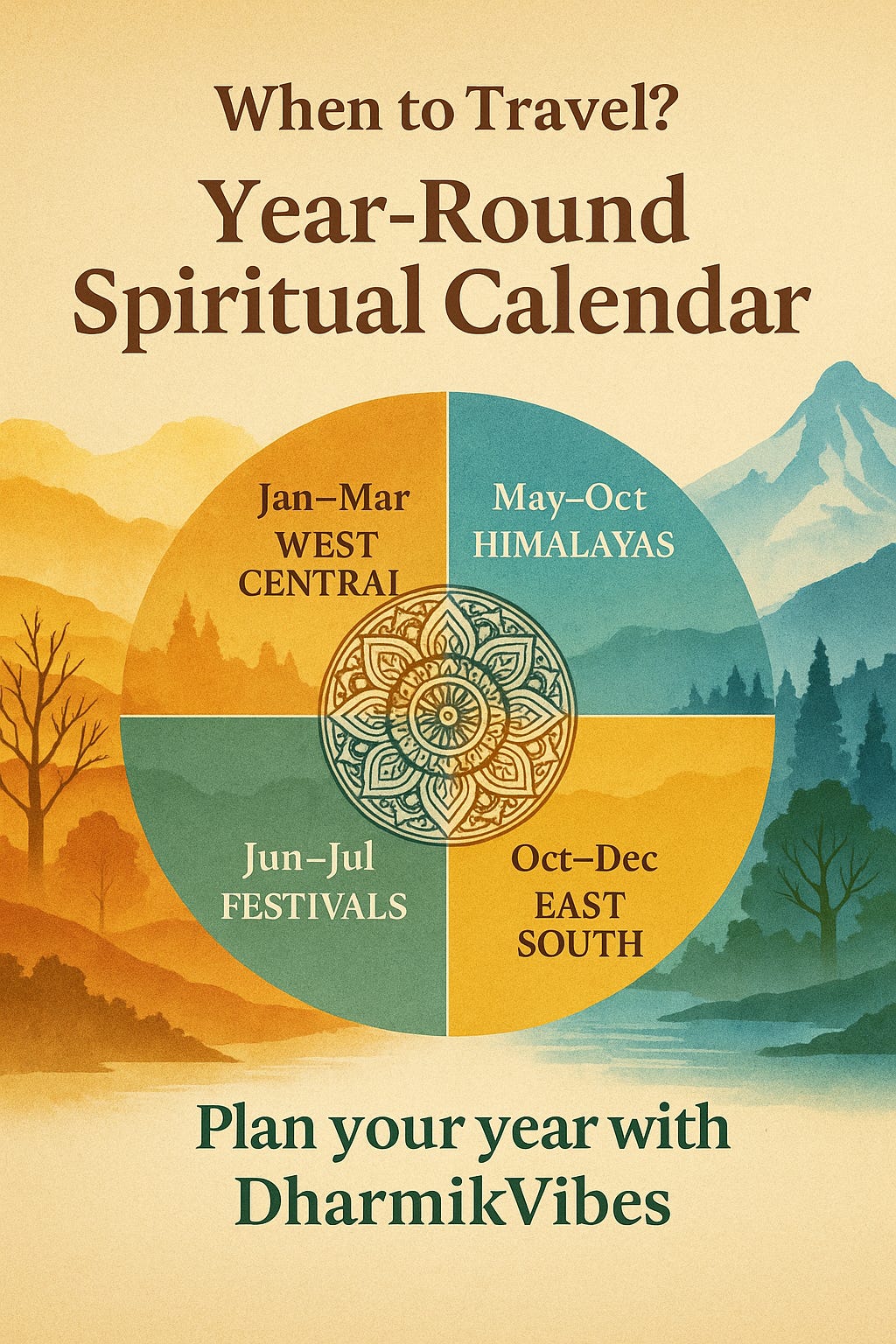From Manifestation to Realization
Pilgrimage in the Indian tradition is not merely travel — it is transformation. To set the intention of visiting the holiest shrines, from Shiva’s Jyotirlingas to Vishnu’s Dhams, from Shakti Peethas to Murugan’s abodes, is to align the soul with liberation.
This article brings together the great circuits of Sanatana Dharma into one dream roadmap, guiding seekers through the most sacred destinations and the seasons best suited to visit them.
The 12 Jyotirlingas: The Eternal Light of Shiva
The Jyotirlingas are twelve radiant shrines where Lord Shiva revealed himself as an infinite column of light.
Somnath (Gujarat) – First Jyotirlinga, symbol of resilience.
Mallikarjuna (Andhra Pradesh) – Sacred seat of Shiva and Parvati.
Mahakaleshwar (Ujjain, MP) – Lord of time and death.
Omkareshwar (MP) – Sacred Om in form.
Kedarnath (Uttarakhand) – Amidst the Himalayas.
Bhimashankar (Maharashtra) – Guardian of the East.
Kashi Vishwanath (Varanasi) – In the eternal city of light.
Trimbakeshwar (Maharashtra) – Source of the Godavari river.
Vaidyanath (Jharkhand/Bihar) – The divine healer.
Nageshwar (Gujarat) – The serpent’s protection.
Rameshwaram (Tamil Nadu) – Linked to Ramayana.
Grishneshwar (Aurangabad, Maharashtra) – The twelfth shrine near Ellora.
Visiting all twelve is believed to free one from rebirth and grant Shiva’s supreme grace.
Panch Kailash: The Five Thrones of Shiva
The five Kailash peaks represent Shiva’s eternal presence:
Mount Kailash (Tibet) – Axis of the universe.
Adi Kailash (Uttarakhand) – Resembling Kailash within India.
Kinnaur Kailash (Himachal Pradesh) – With its vertical rock pillar.
Manimahesh Kailash (Chamba, HP) – Sacred lake pilgrimage.
Shrikhand Mahadev (HP) – A demanding trek, test of devotion.
Each peak is a journey in itself, with Mount Kailash revered as the holiest of all.
Char Dham: The Sacred Four
Established by Adi Shankaracharya, the Char Dham covers the four directions of India:
Badrinath (North, Uttarakhand) – Vishnu’s Himalayan abode.
Dwarka (West, Gujarat) – Krishna’s city.
Jagannath Puri (East, Odisha) – Lord of the Universe.
Rameshwaram (South, Tamil Nadu) – Shiva temple tied to Rama’s journey.
Completing this circuit symbolizes uniting the entire subcontinent in devotion.
Sapta Moksha Puri: Seven Cities of Liberation
Seven ancient cities are considered gates to liberation:
Ayodhya – Rama’s birthplace.
Mathura – Krishna’s birthplace.
Haridwar – Gateway to the Ganga.
Kashi (Varanasi) – The eternal city.
Kanchipuram – Golden city of temples.
Ujjain – Home of Mahakaleshwar.
Dwarka – Krishna’s coastal city.
It is said that even remembering these cities can grant spiritual merit.
Panch Bhootha Lingas: Shiva as the Five Elements
Shiva is worshipped as the embodiment of the five elements of creation:
Earth (Prithvi) – Ekambareswarar Temple, Kanchipuram.
Water (Jala) – Jambukeswarar Temple, Trichy.
Fire (Agni) – Arunachaleswarar Temple, Tiruvannamalai.
Air (Vayu) – Srikalahasti Temple, Andhra Pradesh.
Space (Akasha) – Nataraja Temple, Chidambaram.
These shrines together symbolize unity with the cosmos.
51 Shakti Peethas: The Divine Mother’s Energy
According to legend, the body parts of Goddess Sati fell across the land, giving rise to 51 Shakti Peethas. Each shrine reverberates with Devi’s power.
Major Peethas include:
Kamakhya (Assam) – Seat of Shakti.
Kalighat (Kolkata) – Power of Kali.
Vaishno Devi (Jammu & Kashmir) – Mother’s cave shrine.
Vindhyavasini (UP) – Powerful Devi of Vindhyas.
Kanyakumari (Tamil Nadu) – Virgin Goddess.
Hinglaj (Pakistan) – Sacred beyond borders.
Pilgrimage to these sites is a profound journey into the Divine Mother’s presence.
Vishnu Char Dham
Vishnu’s four abodes overlap with the Char Dham itself:
Badrinath
Dwarka
Jagannath Puri
Rameshwaram
Together, they embody the sustaining power of Narayana across all directions.
Arupadai Veedu: Six Abodes of Murugan
In Tamil Nadu, six temples narrate the story of Murugan, son of Shiva and Parvati:
Thirupparamkunram – Murugan’s wedding place.
Thiruchendur – Victory over the demon Surapadman.
Palani – Renunciation and wisdom.
Swamimalai – Teacher of the Pranava (Om).
Thiruthani – Peace after war.
Pazhamudircholai – Divine fruit garden abode.
Murugan devotees consider visiting all six a great blessing.
Year-Round Spiritual Calendar
Pilgrimage in Bharat follows the rhythm of seasons:
Jan–Mar: West & Central circuits (Somnath, Dwarka, Ujjain, Omkareshwar).
Apr–May: Southern temples (Rameshwaram, Kanchipuram, Chidambaram).
May–Oct: Himalayan shrines (Badrinath, Kedarnath, Adi Kailash).
Jun–Jul: Festivals (Jagannath Rath Yatra, Kamakhya Ambubachi Mela).
Jul–Sep: Panch Kailash treks.
Oct–Dec: Eastern shrines and Sapta Moksha Puris.
This ensures the right weather and the most spiritually vibrant festivals.
A Journey of a Lifetime
To manifest such a pilgrimage is to dream of walking through the very heart of Sanatana Dharma. The Jyotirlingas, Dhams, Shakti Peethas, Bhootha Lingas, and Murugan’s abodes are not just places - they are energies, each one a flame of liberation.
By aligning travel with seasons, patience with devotion, and intention with action, one can complete this dream yatra in a lifetime.
This is the path of manifestation: to set forth on a journey where every darshan becomes a prayer, and every step leads closer to the eternal.


